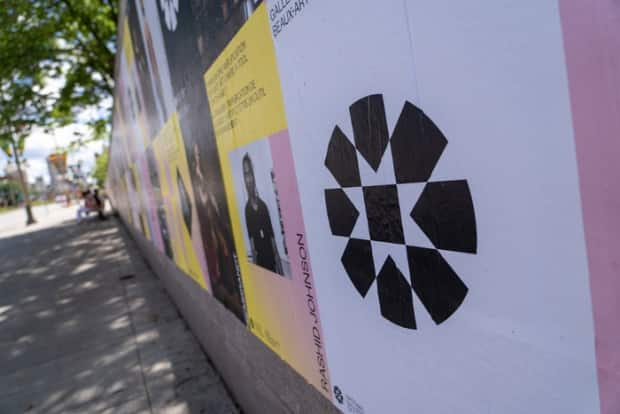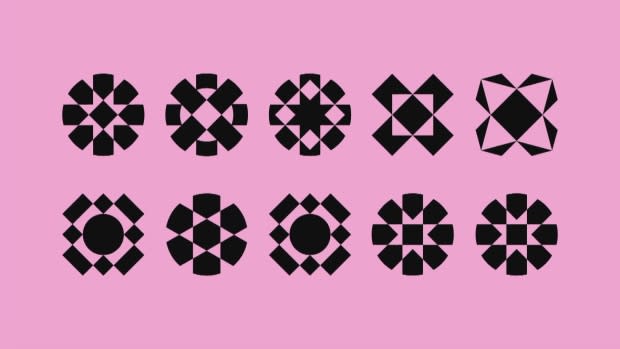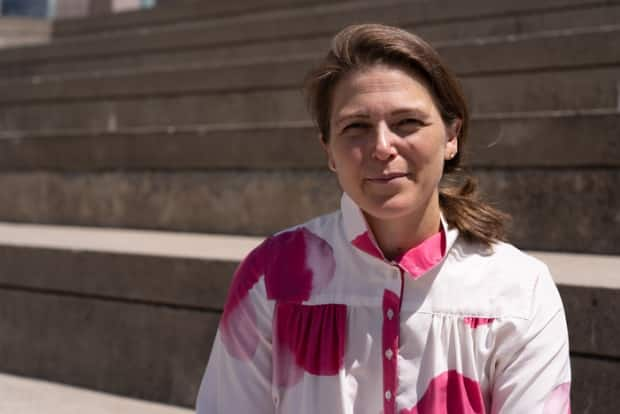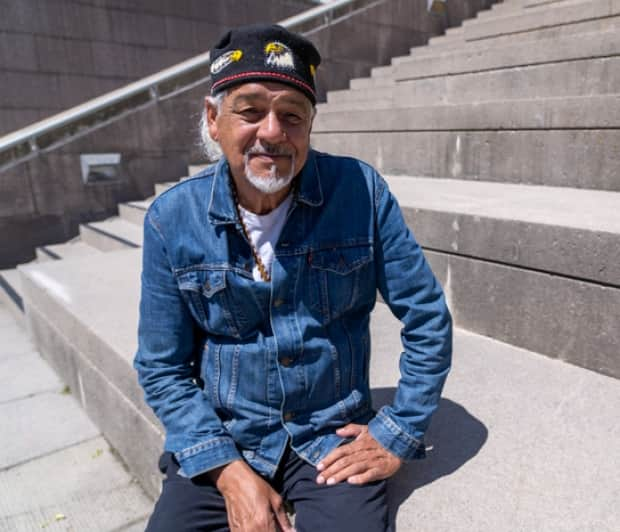A new logo for Canada's national gallery — and a new outlook

A brand new logo signals a new strategy for the future, says the National Gallery of Canada.
The old logo — a red-and-white silhouette of the building's exterior — has been replaced with an animated circular motif the gallery describes as a "nod to the Indigenous way of knowing," with a colour palette "inspired by the northern lights."
"It's the beginning of thinking about our work in a different way," said director Sasha Suda.
"It means looking at who are we collecting, what artists are we committed to [and] collecting amazing works that represent the changing face of Canadian society."
The new logo, unveiled to the public Wednesday, is part of a shift in focus away from Western and Eurocentric art and toward one that makes more room for Indigenous works and artists from underrepresented communities, Suda said.

'Everything is connected'
The gallery said it consulted with a wide range of Indigenous artists, Algonquin elders, staff and other cultural institutions to forge a new strategy it calls Ankosé.
An Anishnaabemowin word that means "everything is connected," the concept of Ankosé was introduced to the gallery by the elders and it's become a guiding principle for how the Ottawa institution wants to give value and understanding to a wide variety of art.
"We're thinking about how those works of art relate to one another. We're thinking about the communities that are represented within the collection," said Suda.
As an example, the upcoming exhibition Rembrandt in Amsterdam not only celebrates the portraits by the Dutch master but also explores Indigenous creative output and the arrival of Dutch traders to Canada during the same time, Suda said.

In recent years Indigenous artists have been given more prominence in the gallery's permanent collection, but it wasn't until 2006 that it mounted its first major solo exhibition of a First Nations artist: an homage to Norval Morrisseau at the end of the revered artist's life.
In 2017 the Canadian Indigenous Galleries was created, allowing for a retelling of the history of the country's artmaking that placed Indigenous art alongside paintings by the Group of Seven and Alex Colville.
"I'm looking forward to what's going to happen here in the coming seasons and years," said Albert Dumont, an Algonquin elder who was recently named Ottawa's English poet laureate.
For decades, the survival of Indigenous culture was under threat, prohibited by laws and discouraged through policies of assimilation. Dumont said he's heartened by the gallery's stated intention to "decolonize" its collection, something he believes is long overdue.

Changing attitudes
"There should have been a relationship of respect and honour between the Indigenous people and the Europeans who arrived here at the beginning," said Dumont.
While he senses the minds of Canadians are opening — especially since the discovery of the remains of 215 children at a residential school in Kamloops, B.C. — Dumont said he knows some people won't let go of their prejudices.
Still, he's hopeful that when the national gallery again welcomes families from across the country, the prominence of Indigenous art will help change attitudes.
"Because of the past racism I've experienced, I know that there are people in this country who will never respect anything Indigenous [but] passing hate on from one generation to the next is changing," Dumont said.
"[Children] will come here, they're going to say, 'Boy, dad is wrong ... grandpa is not right about these things at all. This is beautiful, and everything is connected, and we should all be, you know, in solidarity.'"

 Yahoo Finance
Yahoo Finance 